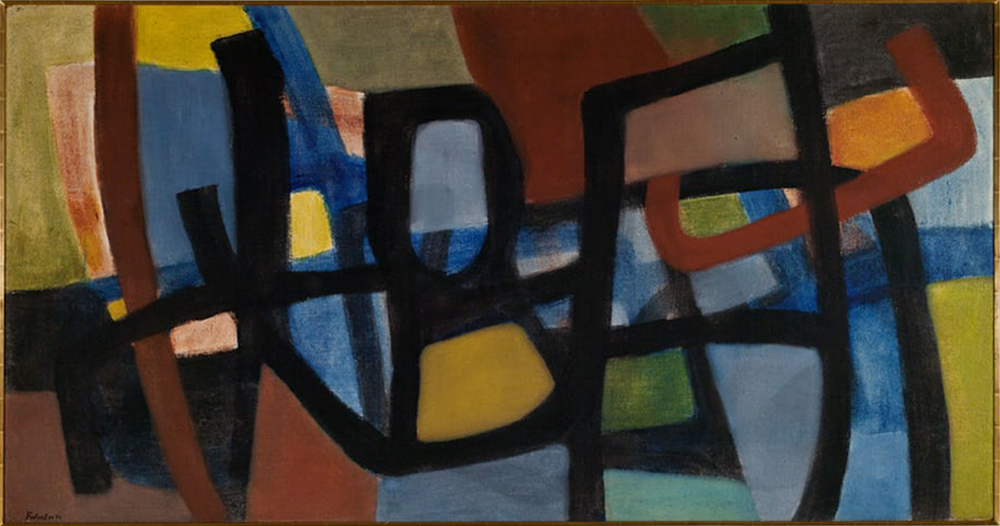
Die große Brücke, 1953
Fritz Winter (1905–1976, DE)
| Medium: | Oil on Canvas |
| Dimensions: | 115 x 220 cm |
about the work
Fritz Winter was among the group of abstract artists in Germany since 1930 and was therefore together with Willi Baumeister a major pioneer in non-representational art during the postwar years. Studying at the Bauhaus with Wassily Kandinsky, Paul Klee and Oskar Schlemmer certainly played a significant and influential role in this. Under the Nazi regime, Winter withdrew to self-imposed exile from society, was even prohibited from painting, fought at the front for several years and ended up as a prisoner of war in Russia. These years had a great impact on him, as he returned to Munich in 1949 and resumed his work as an artist almost immediately. The same year, he cofounded the ZEN 49 group together with Willi Baumeister, Rupprecht Geiger and others. Fritz Winter’s role is undisputed in that after the war his home was a meeting place for the representatives of abstract art. From 1955 to 1970, he worked as a teacher at the Kunsthochschule Kassel and in his long career as an artist, the many upheavals in the styles of 20th century painting can be identified – from the Bauhaus to the Blaue Reiter to informal and color field painting.
A characteristic feature of Winter’s work is the black brushstroke, which acts as a contour for the colored, circular and rectangular color fields in the undifferentiated image space. The contrast between geometric, closed elements and the undifferentiated, open image space shows clearly that the artist may be following a gestural, subconscious style of painting, but always tames this expression with formal order. Fritz Winter does not break out of the formal framework of painting but shows a restrained expression of his inner nature. The crucial influence that Fritz Winter had on German postwar art is shown in this work in the Reinhard Ernst Collection, which thus presents another great name in German art history.